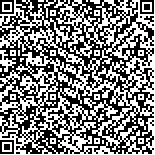本文已被:浏览 482次 下载 362次
Received:February 26, 2023 Published Online:October 20, 2023
Received:February 26, 2023 Published Online:October 20, 2023
中文摘要: 脓毒症患者能量消耗的过程是复杂的。在急性期,由于分解代谢状态,内源性能量产生增加,几乎足以满足能量需求,并且外源性营养无法消除这种内源性能量产生,因此,这一阶段营养支持应以低热量为主。此后能量消耗增加,并且在ICU住院后3周仍显示升高,此时内源性能量产生减少,外源性营养支持是必不可少的。间接测热法是床旁评估能量消耗的金标准。营养指南推荐使用间接测热法来指导危重患者的营养治疗,以防止营养不良和过度营养的不利影响。因此,使用间接测热法来帮助脓毒症患者制定个性化营养支持治疗方案可以改善患者的营养状况,从而改善患者的长期预后。
Abstract:The process of energy expenditure in patients with sepsis is complex. In the acute phase, due to the catabolic state, endogenous energy production increases, which is almost sufficient to meet energy requirements, and exogenous nutrition cannot eliminate this endogenous energy production.Therefore, nutritional support should be based on low calories during this phase. Thereafter, energy expenditure increases and remains elevated for 3 weeks after ICU admission, when endogenous energy production decreases and exogenous nutritional support is essential. Indirect calorimetry is the gold standard for bedside assessment of energy expenditure. Nutrition guidelines recommend the use of indirect calorimetry to guide nutritional therapy in critically ill patients, in order to prevent the adverse effects of malnutrition and overnutrition. Therefore, the use of indirect calorimetry to help patients with sepsis develop personalized nutritional support regimens can improve the patients nutritional status and thus their long-term prognosis.
keywords: Sepsis Indirect calorimetry Resting energy expenditure Nutritional therapy Respiratory quotient
文章编号: 中图分类号:R631 R459.3 文献标志码:A
基金项目:江苏省卫生健康委科研项目(M2020045);老年医学临床技术应用研究项目带头人(LR2022003)
| Author Name | Affiliation |
| LIANG Qi, SUN Liqun | Department of Critical Care Medicine, The Second Affiliated Hospital of Nanjing Medical University, Nanjing, Jiangsu 210011, China |
| Author Name | Affiliation |
| LIANG Qi, SUN Liqun | Department of Critical Care Medicine, The Second Affiliated Hospital of Nanjing Medical University, Nanjing, Jiangsu 210011, China |
引用文本:
